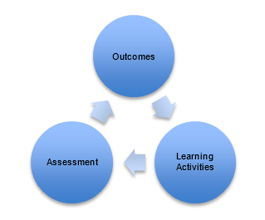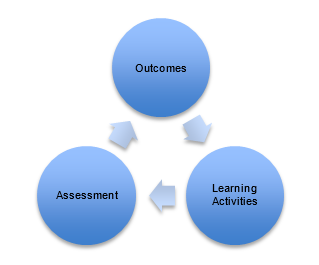Drawing up a road map
When you arrive in a new country or city, one of the first things you’re likely to do is to pull out a map of some form. In many ways, learning objectives also serve as this map when it comes to studying a new training course. These objectives lay out goals, help students to see the bigger picture and set achievable milestones to break up what can seem like a daunting task. Instead of following classes blindly, students can take an active role in their own learning process.
The purpose of a course outline
With Learning Vault we lay out a course outline that not only lists what will be covered in the course, but also what students can expect when it comes to assessments. After all, it can be intimidating to be faced with a test when you have no idea what’s going to be involved or what you are meant to be demonstrating. In knowing that an assessment is going to consist of short answers or the interpretation of a case study with reference sheets, students can mentally prepare to work through that assessment. Our Touchstone documents also help to consolidate and clarify topics once students have learned about these in detail.

Closing the loop with feedback
Biggs’ Constructive Alignment model for course design explores the idea that being informed of the entire learning process in an outcomes-based education enables students to gain significant sense and meaning from that process. Regular feedback can be a vital part of this course style, so we ensure content is broken into smaller sections that provide ongoing feedback that students can use to monitor their progress. If they receive a ‘Not Yet Satisfactory’, teaching staff can provide personalised feedback on ways that the student can improve on their next approach.
Where to find course outlines and marks within Learning Vault
It’s incredibly simple to find both outlines and feedback within the Learning Vault environment. Both can be directly found by students when they click on their Courses section of their dashboard, creating an ongoing view of both learning outcomes and assessment results. Students can see at a glance how they performed in each assessment and how this affects their overall completion.
In addition, it is simple to contact teaching staff for further clarification and to post forum messages to other students within the course. All of these features combined help the student to take control of their own learning process for successful outcome-based results.

